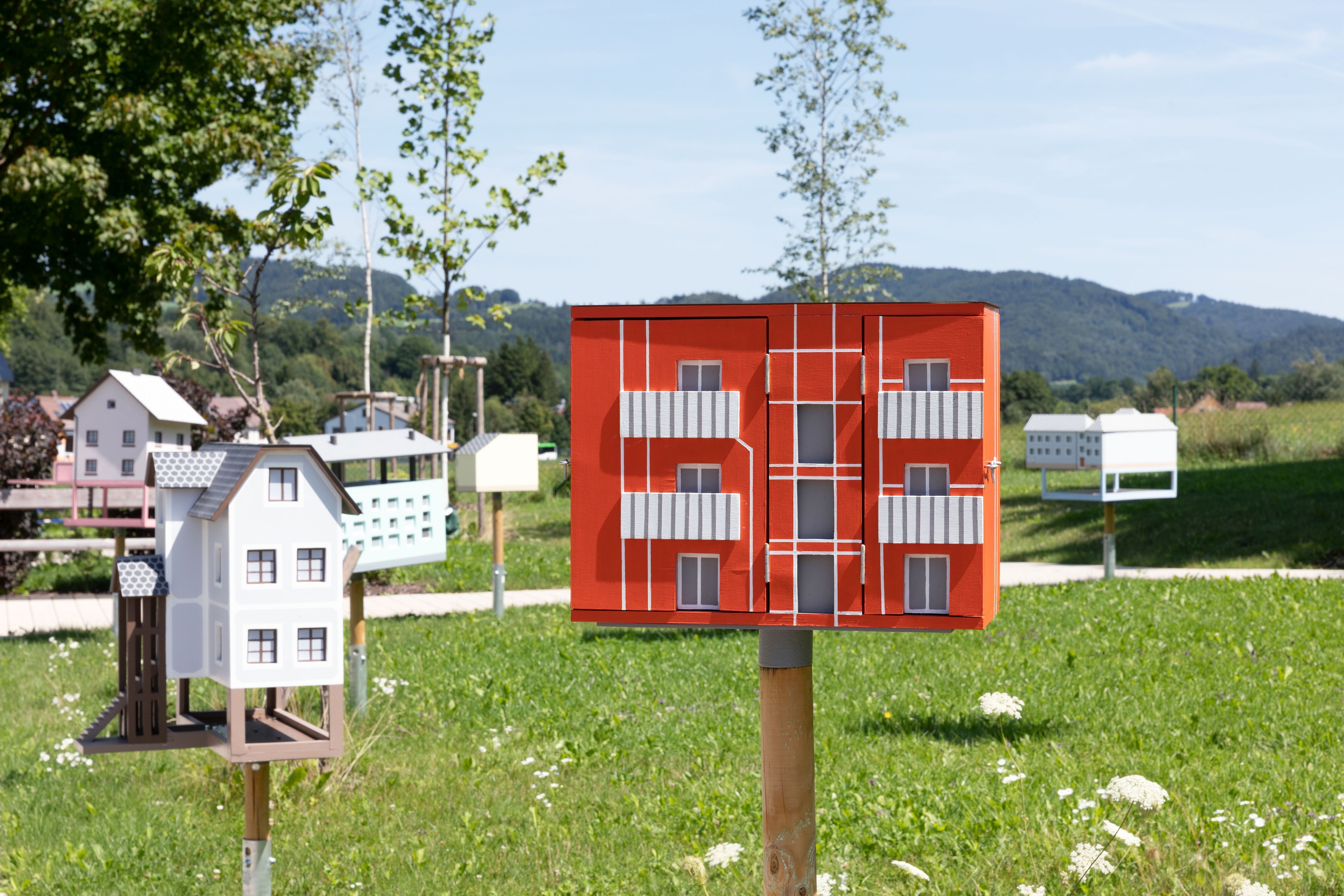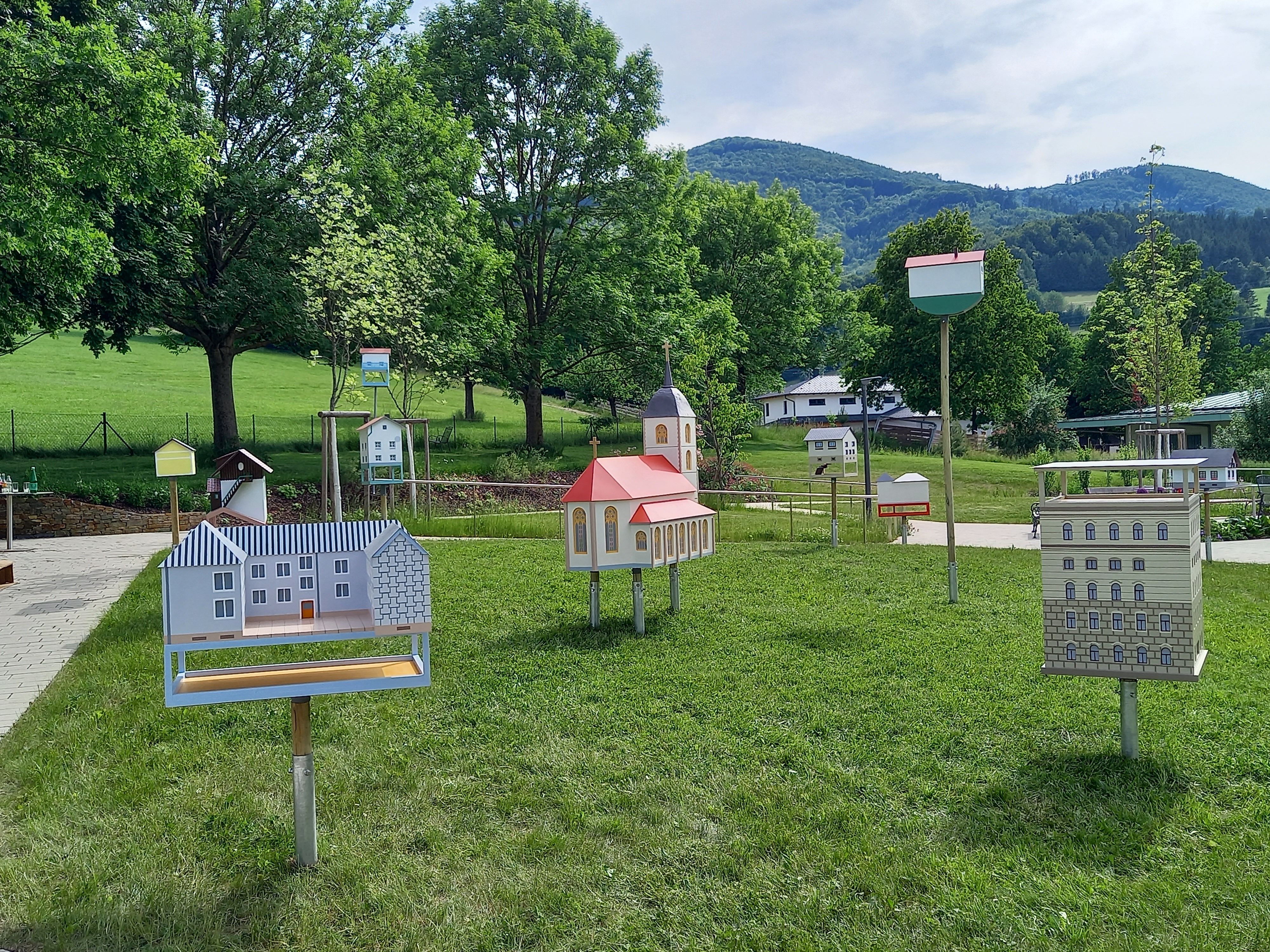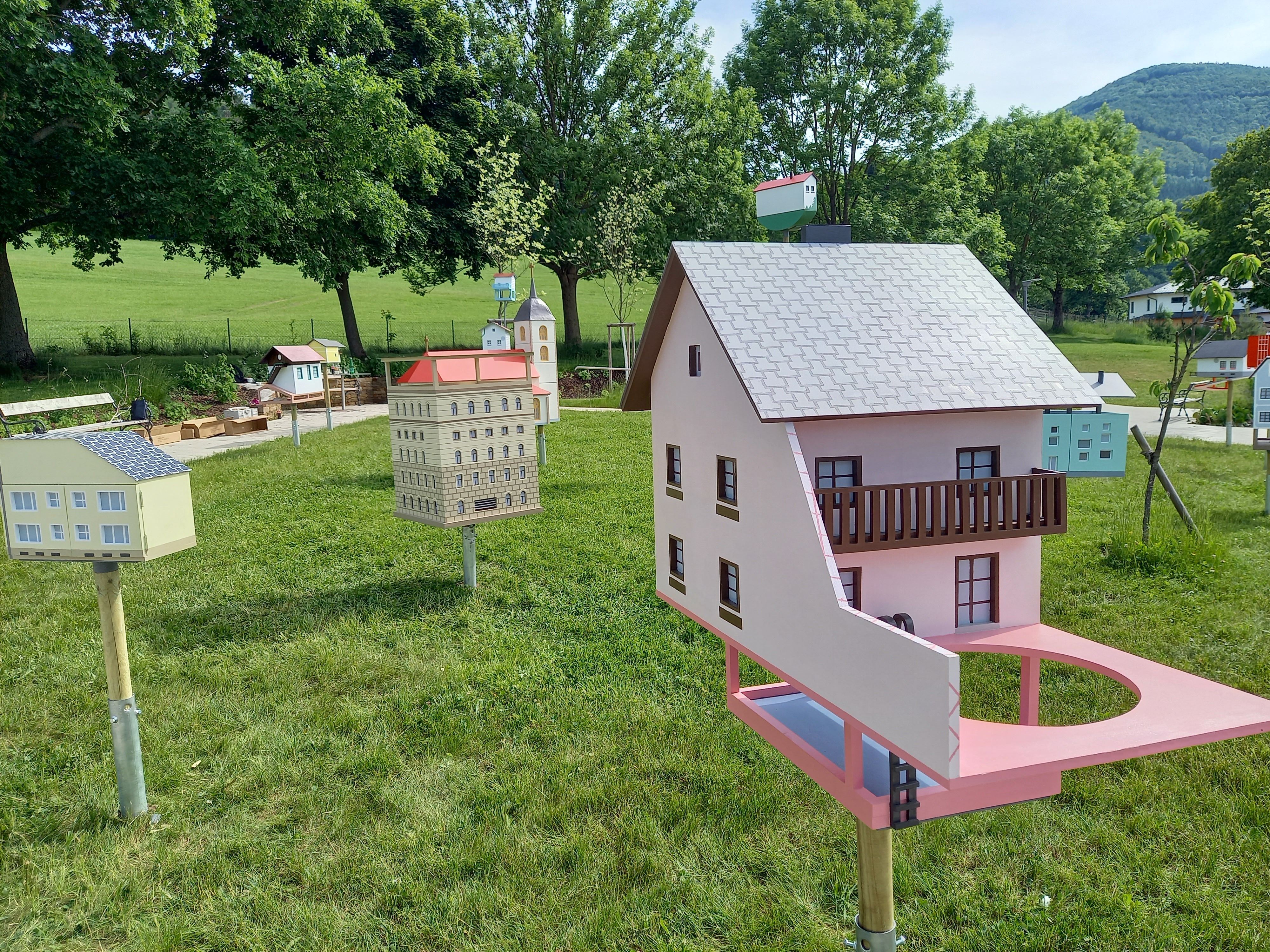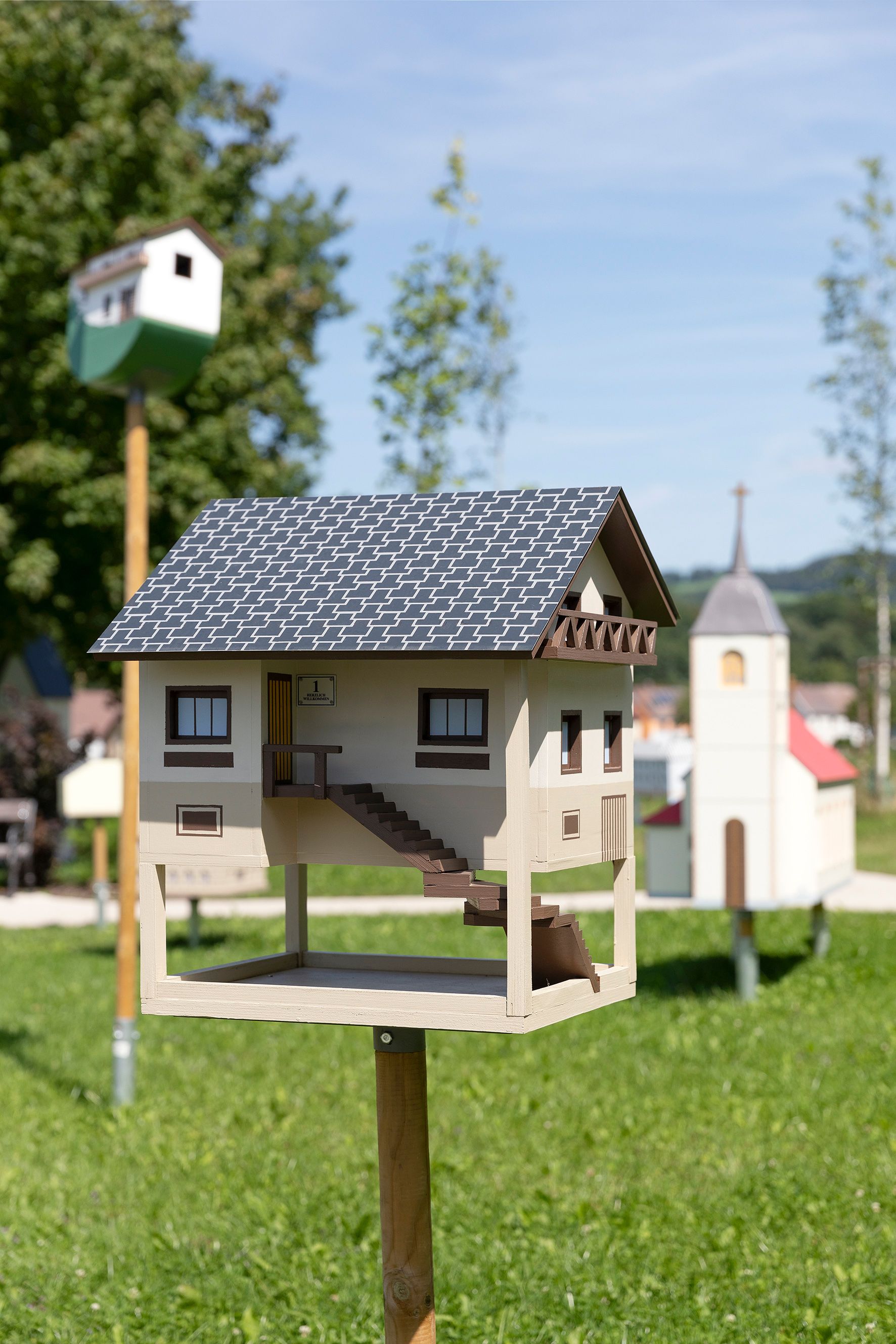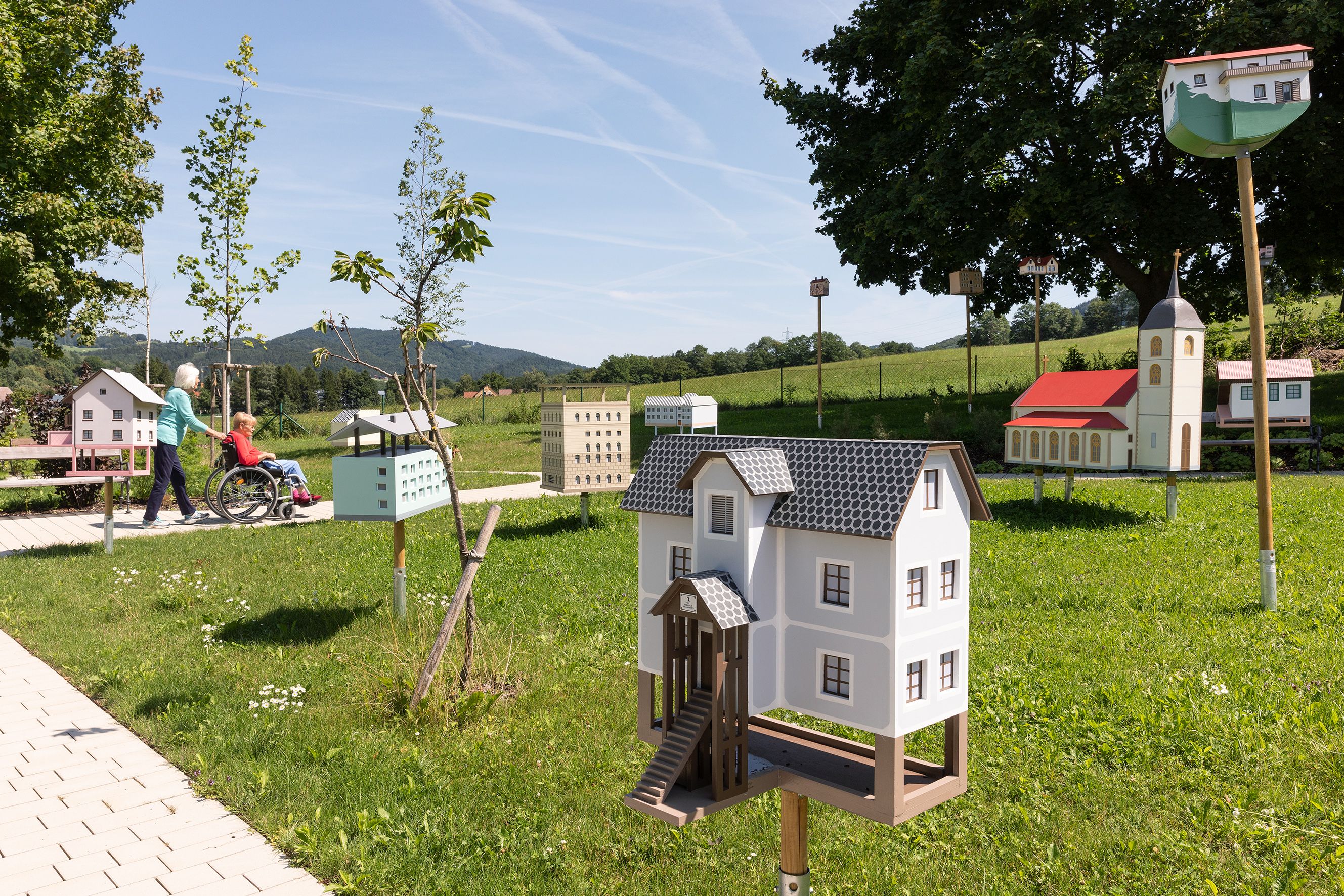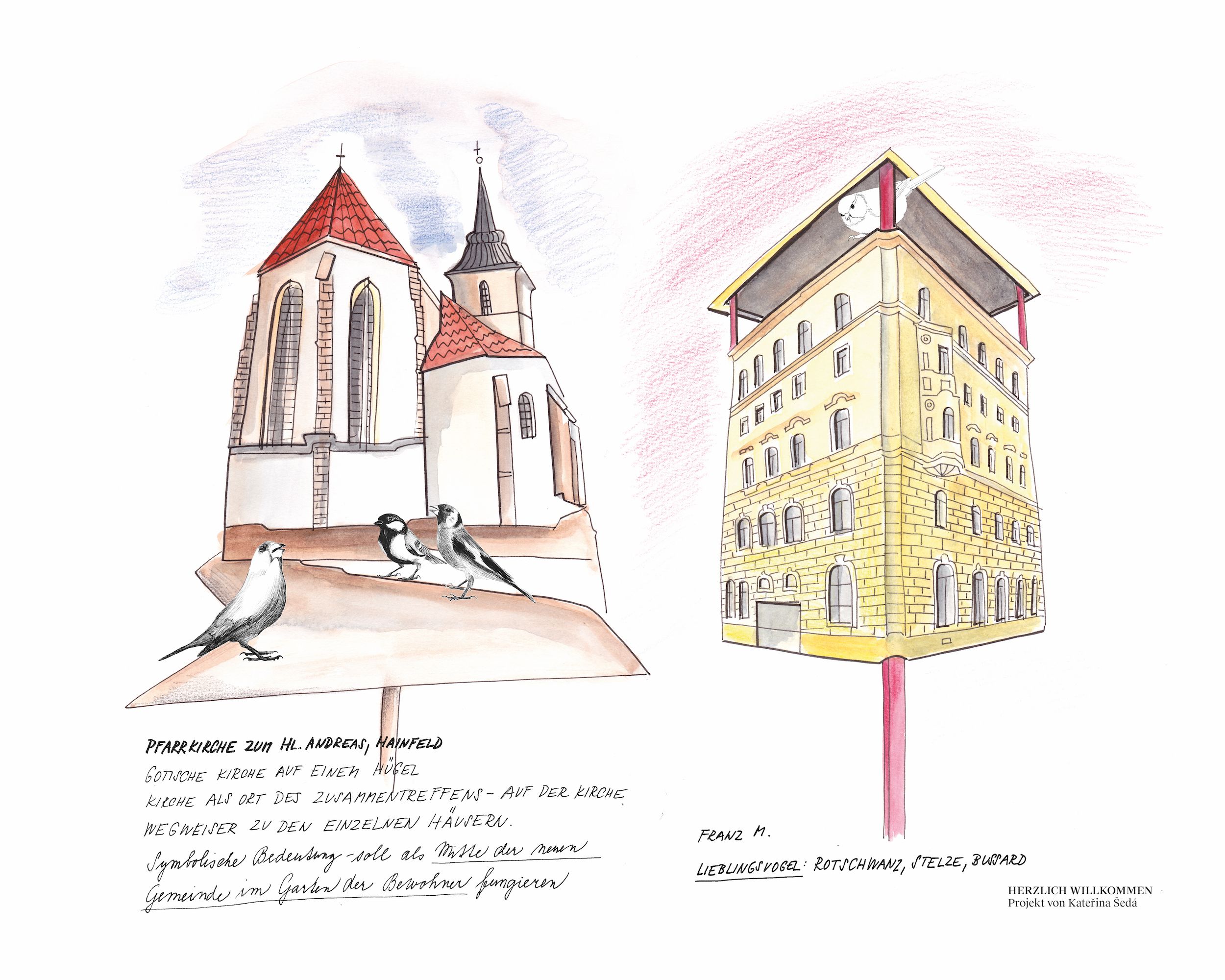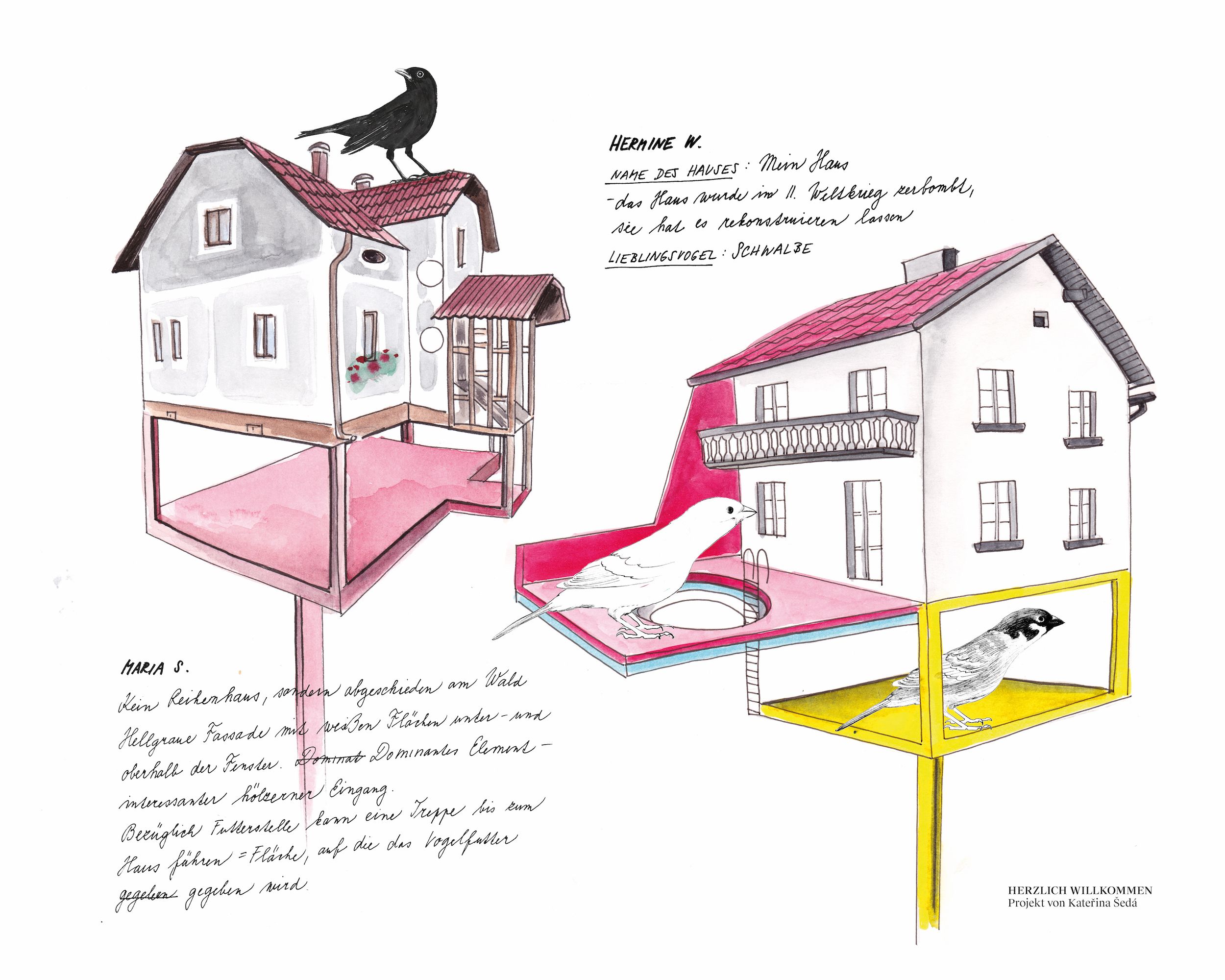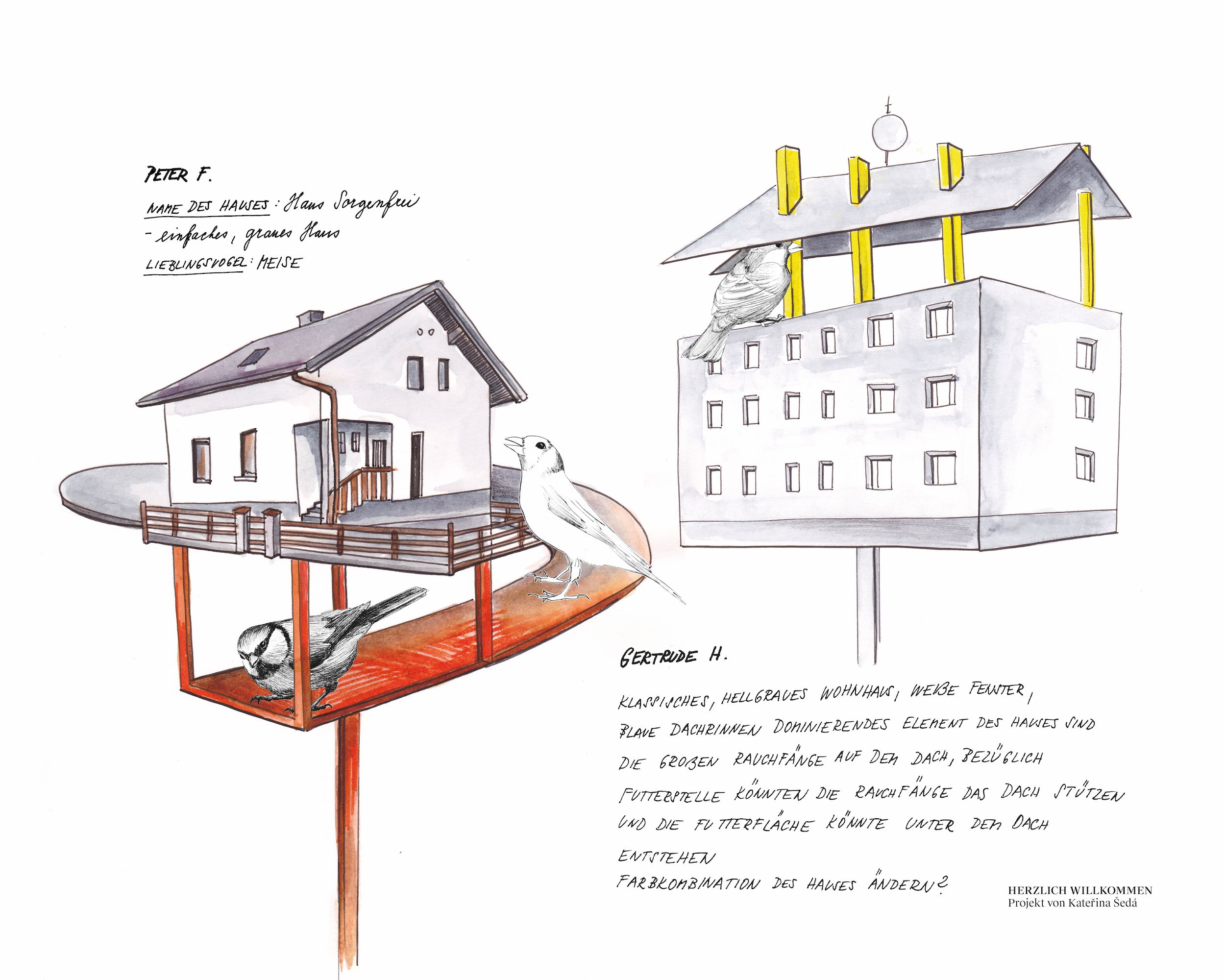Kateřina Šedá
:
Herzlich Willkommen!
Back
Information
At the residential care facility in Hainfeld, the grassy yard became a special focus during the home’s remodeling and the construction of an annex that began in 2018. It is located at the back of the building complex and has a slight incline. It can be seen very well from the rooms and patios facing it and can be easily accessed from the upper floor via a bridge. The artwork that was designed especially for this site is meant to animate inhabitants and to give them a special incentive to spend time there.
Kateřiná Šedá transformed the grassy yard into an extraordinary place with her work Herzlich willkommen! (Welcome!), for which she designed and built a special collection of birdhouses. The title immediately signals what the artist is interested in: namely, in getting people together. It expresses that everyone is welcome in the yard and can take part: not only the people who live and work there and who come to visit, but also the birds. What is special about these birdhouses and what makes them a conversation starter is that Šedá designed them as miniatures of the homes where some of the inhabitants of the nursing home used to live.
During the development of Herzlich willkommen! Šedá lent people an empathetic ear for an intense conversation in which they told her where they used to live, what their home looked like, and what the loss of their home meant to them. She says, “My intention was to let the senior citizens not only return to their homes symbolically, but to animate them by involving them in the realization of the project as well as through the art installation that they can actively visit. It was fundamental to me that they become the co-authors of the individual houses and that their memories be reflected in them. Although this was a long and difficult process, it resulted in a series of important suggestions that have enriched the project very much.”[1] Šedá also studied the birds that would be using the houses that she designed. She began by capturing the different types of birds in delicate, naturalistic drawings before seeking expert advice regarding the structural requirements for birdhouses.
In the course of this process, she created a fascinating range, a whole typology, of homes—from a farmhouse, to a mansion, a small house, a historical urban apartment building with several floors, all the way to a public housing unit—all of which have been reduced to the scale of a birdhouse and assembled together in a kind of village community in the yard. Even the town church and the care facility itself can be found in birdhouse size. Each of these houses has its own charm in which Šedá’s precise work on details merges with the artistically stylized ease with which she makes them functional for birds. She has created open upper or lower levels or an elegantly curved ramp to land on as a kind of additional balcony, along with other witty forms of “bird architecture.”
Each of the houses is a small artwork in itself, but Šedá is interested in much more than this. She wants to include people in her artistic work and to animate them through it in both a practical and visual sense. “A yard should be a place where people like to spend time,” she says, adding: “The view of the yard from the windows is equally important because, especially in the winter, many seniors are not able to go there on their own.”[2] Since the beginning of her artistic career, Šedá has been working on a long series of works that are based on the principle of animating and changing a specific social system—be it a family, an entire residential area, or a high rise in which people live side by side in anonymity—as a way of letting new and better forms of communication and communal living evolve. She began working with older people when she was a student, when her grandmother Jana Šedá retired. Jana became apathetic and was no longer interested in anything. She always answered with the stereotypical phase “Je to jedno,” which translates as “it doesn’t matter.” Kateřiná began to talk and work with her and got her to draw from memory all of the items that she worked with as a long-time employee of a household appliance store in Brno—although she had never drawn in her entire life. Her grandmother created over a thousand drawings in which she captured the specific characteristics of the objects with touchingly simple but remarkably accurate lines: from a screwdriver, to bow saw, all the way to a colander—also in the different sizes that were available at the time and with an additional inscription.
For Jana, this new project was a hugely enriching experience. Her granddaughter Kateřiná turned Je to jedno into an art project, exhibiting the drawings and publishing them in an impressive book.[3] The poem I Dwell in Possibility by Emily Dickinson can be regarded as a motto for Herzlich willkommen![4] Dickinson was born in 1830 in a rural part of the US and spent her entire life in her family home, which her grandfather built. The house acts a metaphor in and for her poetry, which she juxtaposes with prose:
I dwell in Possibility –
A fairer House than Prose –
More numerous of Windows –
Superior – for Doors –
Of Chambers as the Cedars –
Impregnable of Eye –
And for an Everlasting Roof –
The Gambrels of the Sky –
Seen from the perspective of Dickinson’s poem, Šedá combines poetry with prose in her Herzlich willkommen! project. She opens the windows and doors for sensations, perceptions, thoughts, and memories. At the same time, she also sets the prose—the practical, the mundane—in motion, letting the birds act, poetically speaking, as messengers from one realm to the other. Dickinson continues:
Of Visitors – the fairest –
For Occupation – This –
The spreading wide my narrow Hands –
To gather Paradise –
Silvia Eiblmayr
Notes
[1] “Die Journalistin und Kuratorin Anna Soucek fragt bei Kateřina Šedá nach,” in Herzlich willkommen. Ein Projekt von Kateřina Šedá für den Garten des Pflege- und Betreuungszentrums Hainfeld, 2021, Kunst im öffentlichen Raum Niederösterreich, Land Niederösterreich, Abteilung Kunst und Kultur (St. Pölten, 2021), 26–27.
[2] Ibid., 28.
[3] Kateřina Šedá, Je to jedno / It Doesn’t Matter, Katalog / catalogue (Brno – Lišen, 2005). Kateřina Šedá funded this catalogue herself.
[4] Emily Dickinson, “I Dwell in Possibility,” Emily Dickinson. Selected Poems (New York: Bloomsbury, 1992), 102.
Images (8)
